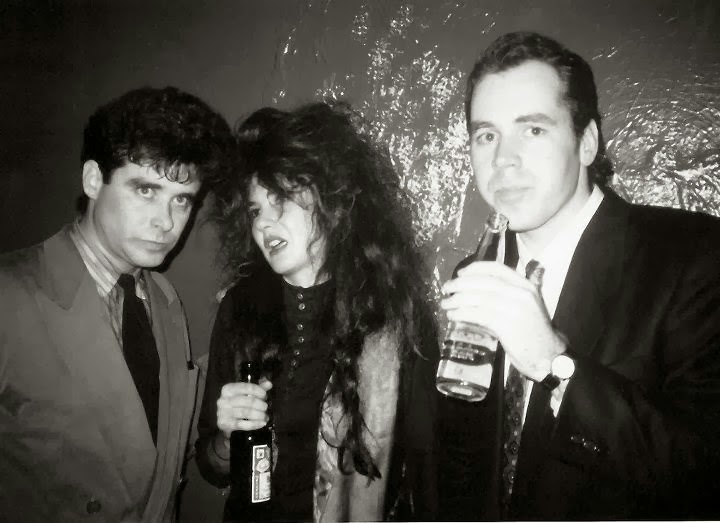In a really fun, well-written 1987 New York Times Magazine article, Caryn James took the pulse of that decade’s New York literary life, a patient with an irregular heartbeat. In retrospect, most of the best writing of that era was done by others elsewhere.
There are just as many literary people in NYC (and everywhere else) now as during the time of the so-called “Brat Pack,” probably a lot more, but no one worries too much now about naming or glamorizing them. That’s probably for the best. The opening:
A writer’s life may be one of dreary solitude, but the Literary Life – ah, the Literary Life promises glamour, fame, a seat next to Hemingway as he scribbles immortal prose in a Paris cafe. The myth is so alluring it can survive even the most scaled-down atmosphere. On a typical New York night, for instance, David Leavitt, Meg Wolitzer and Gary Glickman – all novelists in their 20’s and the best of friends – are likely to be having dinner at their favorite restaurant, a dingy, hole in the wall in the West Village. ”Even as we sit there,” Glickman says, ”I sometimes wonder, ‘Is this it? Is it the Cafe de Flore?’ ” As Hemingway might have said, isn’t it pretty to think so?
A different twist on the literary life in 1980’s New York clubs replacing cafes, and roaming bands of authors stalking the night streets from Area to Palladium to Nell’s. Jay McInerney’s best-selling 1984 novel, Bright Lights, Big City, with its aspiring-writer hero, created a hip New York where late-night clubs and cocaine blurs collide with literary ambition. Tama Janowitz’s Slaves of New York, published last year, carries on the image, in stories full of struggling artists, devious gallery owners, desperate hangers-on, all willfully imprisoned by their need to be trendy in the city. But these muddled, hard-partying characters – when would they ever find the time, or the clearheadedness, to write? – are fictional exaggerations.
In reality, for many young writers today, New York is a base where they can strive and grow until they become successful enough, or frustrated enough, to leave for a while – to spend the summer at a tranquil writers’ colony or to make money teaching for a year – always returning to replenish themselves in the literary waters, and hit some gossip-filled book parties to make contacts with editors, agents and publishers.
Just glance at the itineraries of some of New York’s hottest young writers. Jay McInerney, who is 33, spent half of last year in Ann Arbor, where his then-wife was finishing her Ph.D. Tama Janowitz, 30, has a fellowship at Princeton University this year. David Leavitt, the short-story writer whose first novel is The Lost Language of Cranes, lives on Long Island. Meg Wolitzer, author of Hidden Pictures, has been teaching upstate. Kathy Acker (whose latest novel is called Don Quixote) the determinedly punkish 38-year-old author identified with downtown Manhattan has lived in London for the last two years. But New York has lost none of its cachet or importance for these writers; no matter where their legal residence, they seem to spend as much time in the city as out of it. They represent the city’s new literary life.
This is no longer the place where, as in years gone by, literary circles had real coherence, where the mention of the journal Partisan Review conjured up an image of like-minded intellectuals. In New York today young authors live in a swifter-than-sound atmosphere, full of energy, hype and distractions. The change reflects new realities in the city and in the publishing industry: higher rents and tougher urban living combined with pressure to bring out a book of fiction before the first blush of youth has passed. So aspiring authors find themselves on a harshly competitive fast track as soon as they are out of college or graduate writing programs – if not before. No wonder they have little time or taste for Bloomsbury-cozy salons or Hemingway-macho feuds.•

